The Twin Cities has had some notable recording studios during the 1950s, ’60s, and early ’70s. (I’ll include later studios if people send me information.) Here are some of them. Please contact me with additions or corrections.
AMBIENT SOUND
David Allan Wright and Bob Cain started Ambient Sound in 1979 as a partnership; David left in 1986 and the studio has been owned by Bob ever since. Ambient Sound had several locations, including two years in a church at 28th and Nicollet that was a branch of the West Bank School of Music. A long list of artists recorded there, including Fine Art, Artesian Dreams, Chameleon, Soul Asylum, The Answers, Loyal Subjects, Willie and the Bees, and Dez Dickerson .
Photos below courtesy David Allan Wright:
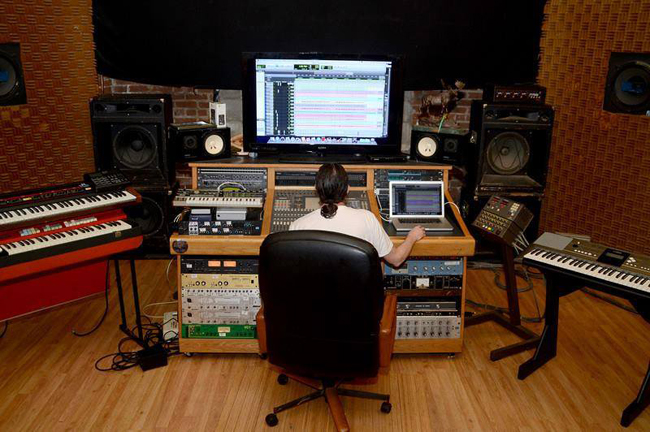
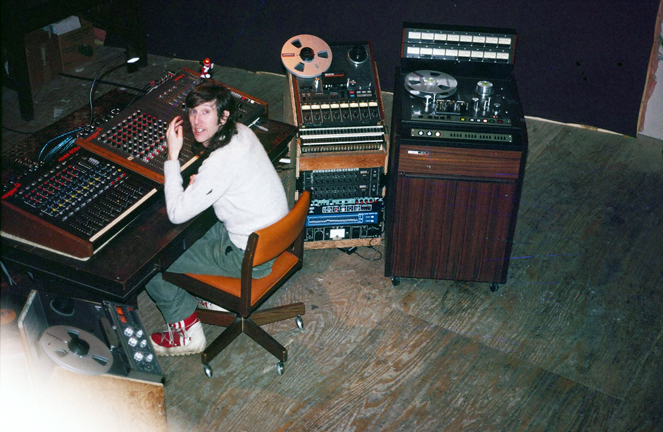
AUDIO-TEK
This studio was located on the second floor of a 1925 building originally built by the Modern Woodmen of America. The space had been a lodge/dance hall. 711 West Broadway was demolished in 1981/1982.
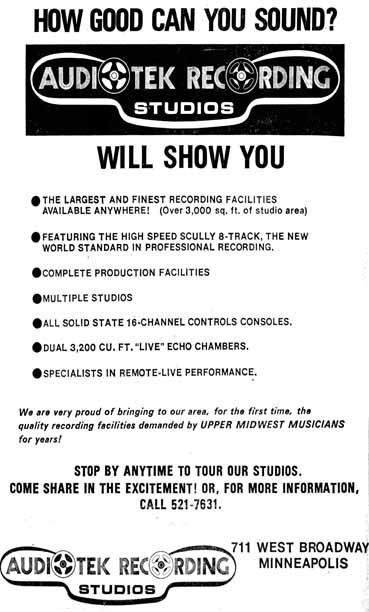
Strib, December 8, 1968
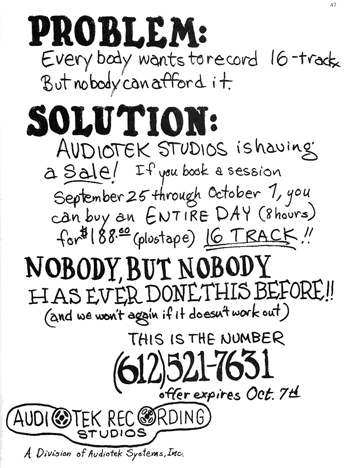
Insider, September 1971
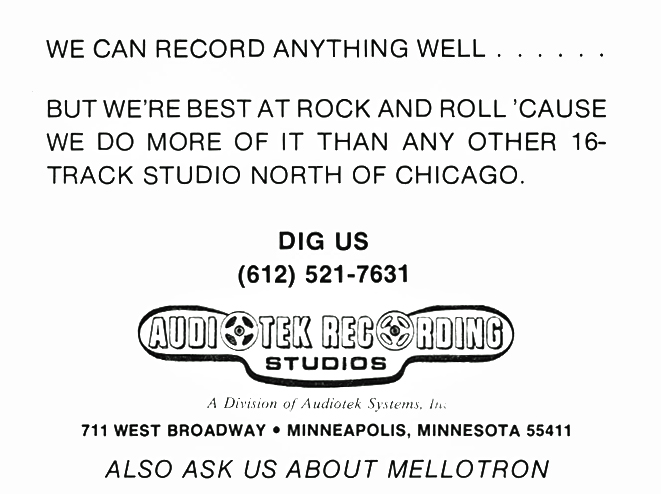
Insider, March 1974
BLACKBERRY WAY
Blackberry Way Recording Studio was founded in the early 1970s by three members of the rock band Fingerprints: Michael Owens, Kevin Glynn, and Steven Fjelstad. The original studio was located at 606 13th Ave SE in Dinkytown. It has since moved to a non-public location. In 1984 Blackberry Way launched its own record label as well.
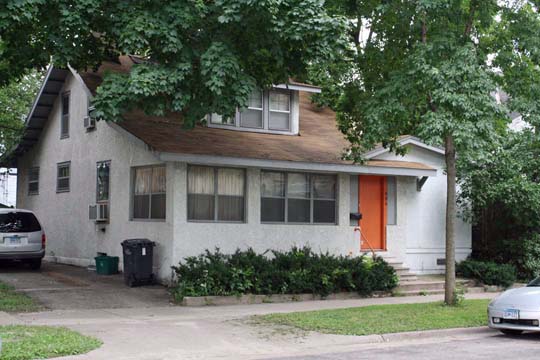
Blackberry Way Studio’s Original Location
In the late 1970s, Twin/Tone Records was launched, and signed Fingerprints, the Suburbs, and Curtiss A’s band Spooks. Blackberry Way recorded most of Twin/Tone’s early records, including “Big Hits of Mid-America, Volume 3.” Considered one of the most important albums of the era, it has been on display in the Rock ‘n’ Roll Hall of Fame for over ten years.
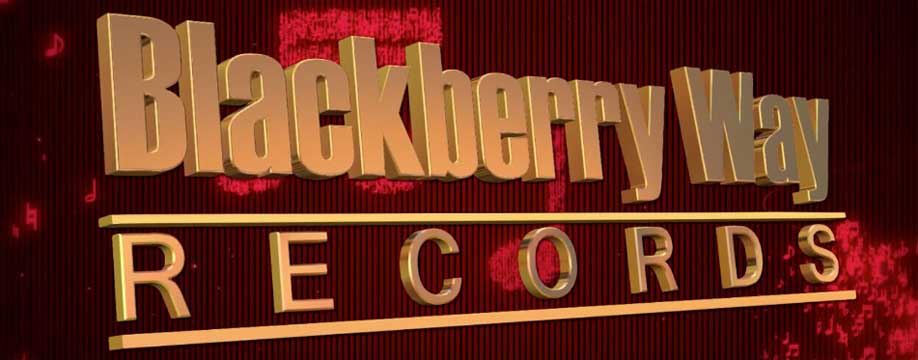
Blackberry Way was in the forefront of recording new music in Minneapolis. Examples include:
- The Suburbs’ “In Combo,” as well as most of their Twin/Tone recordings
- The first Husker Du record
- Soul Asylum
- The Replacements. Most of the Replacements’ early work was recorded at Blackberry Way, including the critically acclaimed LP “Let it Be.” In 1989 Rolling Stone named “Let it Be” the 15th most important album of the decade.
- The pre-production of “Pleased to Meet Me” by the Replacements was done at Blackberry Way for Sire/Warner Bros.

Blackberry Way’s Current Studio – Photo Courtesy Mike Owens
Mix Magazine called Blackberry Way “a haven for pop rock bands.” The studio records all styles of music, including:
- Heavy metal band Hurricane Alice recorded an album that led to a signing at Atlantic Records.
- Country band Live ‘N Kicking also recorded an album that led to a deal with Warner Bros. and a Grammy nomination.
- Tete Noire did a recording that led to a signing with Rounder Records.
- Producer Rob Stevens (Lennon, Red Hot Chili Peppers, and Herbie Hancock) produced a major label demo for Fun House, and was very impressed with the sound at Blackberry Way.
- Two-time Grammy winner Bobby Z produced tracks for Trip Shakespeare that led to a signing with A&M Records.
- British producer Cliff Davies (Ted Nugent) produced an album for local great Barry Goldberg – a fun week indeed!
Also included on the client list:
- The Trashmen
- The Castaways
- The Suicide Commandos
- Grammy winner Gary Hines (Sounds of Blackness)
- Jimi Destri of Blondie
- Grammy winner John Madock
COOKHOUSE – Please see Kay Bank
CREATION AUDIO – Please see Kay Bank
DIAL COMMUNICATIONS/VISIONS OF SOUND
This ad uses both the name Dial Communications Recording Studio and Visions of Sound. It was located at 323 13th Ave. NE in Minneapolis. This building dates to at least 1914 and was an active Mortuary when the studio was in operation.
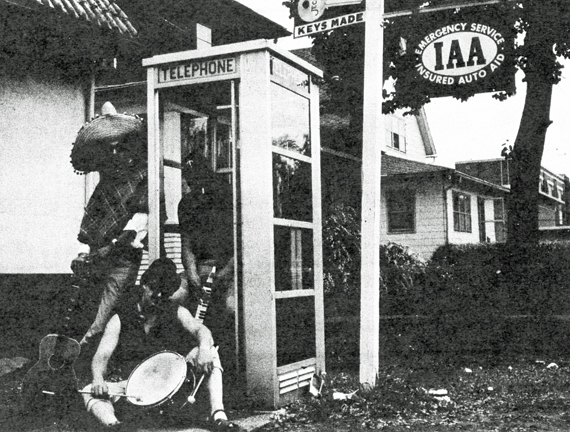
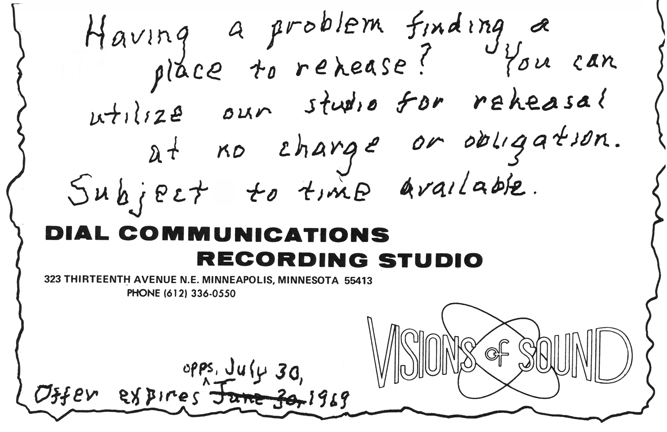
Insider, June 7, 1969
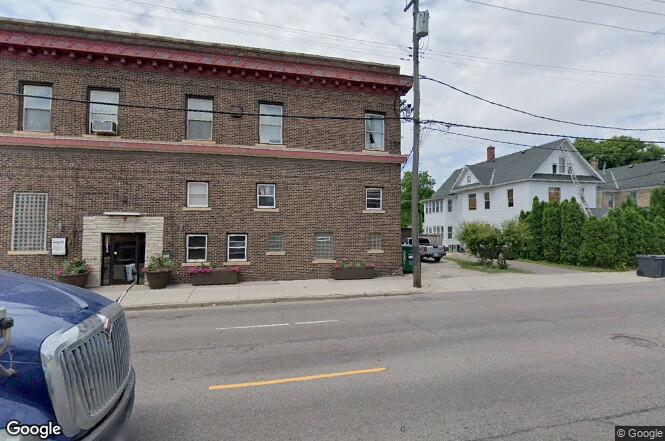
The Dial Studio building today – Google Maps
DOVE STUDIO
In the Spring of 1964 Dove Recording Studio was opened by Don Peterson and Darold “Arv” Arvidson. This was strictly a recording studio, not a record label. The owners bought their first studio from David Hersk, at 6217 Lake Street in St. Louis Park. Don ran the business side and Arv handled the technical side, building much of the equipment himself. The Novas recorded “The Crusher” there. Another band that recorded there was the Surfers (although Robb Henry of the Surfers remembers recording in a small house south of Minnetonka Blvd. between Texas and Louisiana in 1966-67.)
The facility proved to be too small, and in early 1965 it was moved to 9358 James Ave. So. in Bloomington. Dove closed its doors in early 1970, selling the equipment to Warren Kendrick, who started Audio City studio on East Lake Street.
Tom Herbers wrote:
Some Dove highlights include most of the Litter’s ’67 album Distortions, the Calico Wall’s drug-referencing ’67 single, “Flight Reaction,” and C.A. Quintet’s dauntingly titled ’69 double album, Trip Through Hell. While the Calico Wall pushed the limits of sanity and sound technology, they never got to play live, since bandleader Peter Steinberg was drafted shortly after the recording was made. Original copies of Trip Through Hell, Distortions, and other Dove creations are rare and fetch high prices among record collectors/speculators. The Stillroven, the Underbeats, and T.C. Atlantic also recorded at Dove. Long unknown visionary Michael Yonkers’s 2004 Sub Pop/Destijl disc, Microminiature Love was recorded at Dove in 1968.
A compilation of unreleased Dove recordings called “Free Flight” was issued by Get Hip Records in 1998.
DOVE’S MIXING BOARD
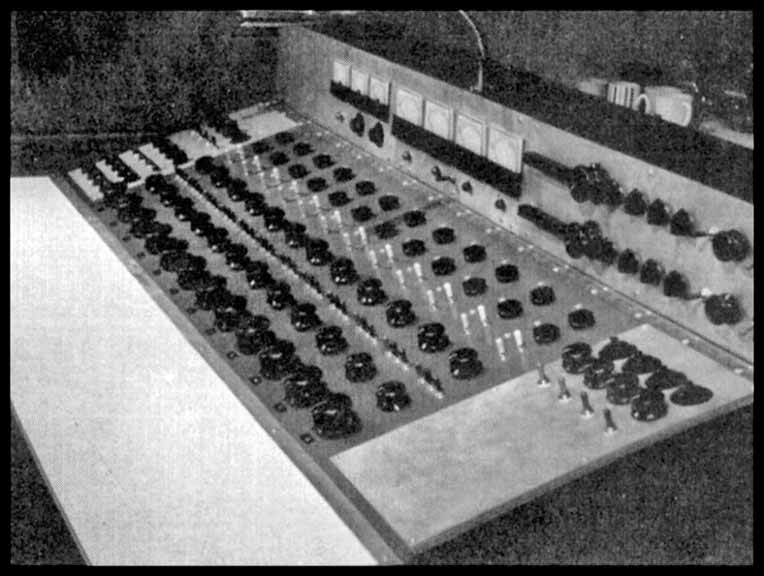
From Rod Eaton:
This was the mixing board at Dove studios. Darold Arvidson, “Arv,” built the entire thing. It was almost six feet wide. There were twelve inputs. Originally it had just two outputs. When the studio bought its four-track recorder, the board needed to be modified. Arv did that in an unusual way. There was a switch – I think it’s the one centered below the four large VU meters – that “split the board.” Half of the inputs could be assigned to outputs 1 and 2, the other half to 3 and 4. That was just one of the board’s unique features. From bottom to top, each input section had the big “pot” to adjust level, a smaller pot for echo send, output assignment selectors, echo return, don’t remember what the next group of three switches did, then a rotary switch for low and high frequency EQ. The panel at far left contained the tape machine transport and record controls. The panel on the right was a sub-mix section for playback. I sat behind this monster for hours, but I’ve totally forgotten what the other things on the board did. Maybe Steve Longman will tell us – he engineered lots of sessions. The mixing board definitely had a homemade look but it was actually very sophisticated for the time. It was just one of the things that made Dove Studios an interesting place to record. (photo: “Free Flight” album notes)
DOVE’S STUDIO A
Again from Rod Eaton:
Here’s a photo of Dove Recording Studios’ Studio A. There was no B, C, or D – just A. The photo is from the Dove Rate Card, October 1, 1965. I don’t recall there being another version. The photo doesn’t really give a sense of the size of the room. It was pretty large – maybe 30 by 40 feet. The cement block walls would have been much too “live” by themselves, but the acoustical tile ceiling absorbed some of the bounce. In three of the corners floor-to-ceiling sound-deadening panels also improved the room’s character. I remember the studio having a bright presence and quick decay.
Over the control room window hung two ginormous Voice of the Theatre speakers. The smaller speaker in between was for talkback. It may also have doubled as the “car audio” speaker. Sometimes it was a good idea to hear a track the way it might sound on less-than-perfect speakers. The studio had a Steinway Grand and a Lowrey organ with a Leslie speaker. This photo was taken before the big wooden box housing the EMT Plate Reverb system was installed. It later sat where the coat rack is in this photo. Also a few years later a more-or-less isolated drum booth was built in one corner. Finally, if you look through the window into the control room, you can see the four-track Ampex recorder to the left. And that’s me in a white sweater standing behind the mixing board.
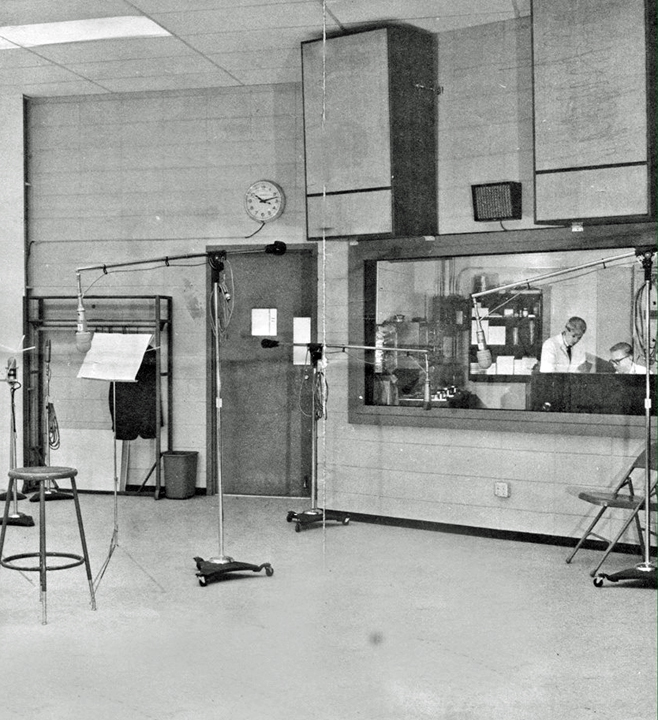
Photo by Don Peterson, courtesy Rod Eaton
GAITY RECORDS
Gaity was both a recording studio and a record label. Not yet out of high school, North Minneapolis teen David Hersk started a recording business in his parents’ basement at 1501 N. Newton Ave. Naming his company Gaity (“That’s not even a word!” he said later), he started with a Robbinsdale choral group called the Quarternotes in 1954. He recorded all sorts of music in the ten years of his enterprise: Do Wop, rockabilly, rock ‘n’ roll, folk, even surf music.
Eventually he built his own studio in Bloomington, which he later sold to Dove. Usually only 500 copies of a 45 were made and given out to DJs and at dances. They are extremely rare today and are traded at high prices among collectors. A two-volume anthology called “Bloodshot!” was put out in vinyl by Norton Records in 1994 and is also available on CD. On it are songs (mostly recorded between 1958-60) by groups such as the Sonics, Blue Kats, Glenrays, Valquins, Wisdoms (David’s favorite), Corvairs, the Jades, and the Big M’s.
In about May 1962 Hersk moved his studio from the basement of his home to the Empire Photosound Building, 1920 S. Lyndale Ave. in Minneapolis. An item in Vic Burton’s Night Beat column in the Minneapolis Daily Herald says that Hersk, “a very energetic fellow,” had recorded “Folksong: U.S.A.,” featuring the Robbinsdale Chorale. The record was released on the Audio Fidelity Label. Burton reported that 23-year-old Hersk started his recording career with a $65 tape recorder, but now had about $30,000 invested in equipment and was able to record all of his sessions in stereo.
David got out of the recording business in 1964 and went into graphic arts, doing album covers and other projects. It is through his enthusiastic efforts that we have these nuggets of Twin Cities music.
MICSIDE – Please see Kay Bank
NIC-O-LAKE RECORDING STUDIO
The Nic-O-Lake recording studio was located in the basement of George Garrett’s Nic-o-Lake Record Store. (Also see Record Stores.) This was at 2 West Lake Street from the end of 1963 to the end of 1965, as far as I can tell from the ads in the Strib. Everything else about this studio and all of Garrett’s activities can be found on his page.
NICOLLET – Please see Kay Bank
SOUND 80 – Please see separate page.
SOUTH SIDE RECORDERS
This ad from the Insider is for an 8-Track studio, but no location is given.
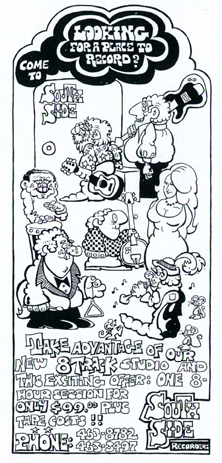
Insider, July 1973
STUDIO 5
This was advertised as a new recording studio in the March 1968 edition of the Insider. The ad promised “Nashville-Type Sound Now Available in Twin Cities by former New York recording engineer.” A&R Direction included. The address was 4029 Penrod Lane NE, Minneapolis.
THE STUDIO
“The Studio” was on 6th Street in St. Paul, 1977 to 1979. It was owned by Bob Behr, who had played drums and was part of WestSide/Free & Easy. Behr had bought Lamont Cranston’s Teac 8-Track equipment. David Allan Wright says it did a lot of Demo work and records. Artists included Good Vibrations, Jimmy Jam Harris (Michael Dixon), Artesian Dreams, Spitfire, Little Red Rooster, Lamont Cranston, White Sidewalls, Fine Art, Meteor, and various Funk and jazz artists like Herman Jones and Free and Easy.
Photos below courtesy David Allan Wright:
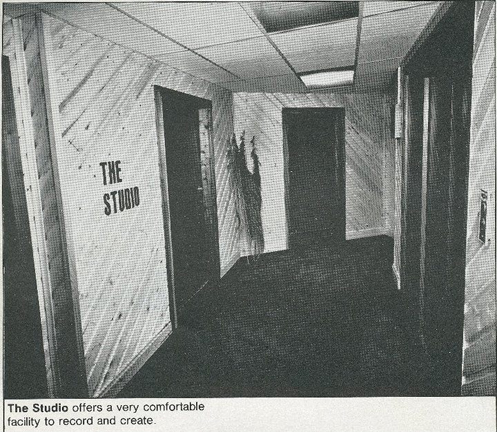
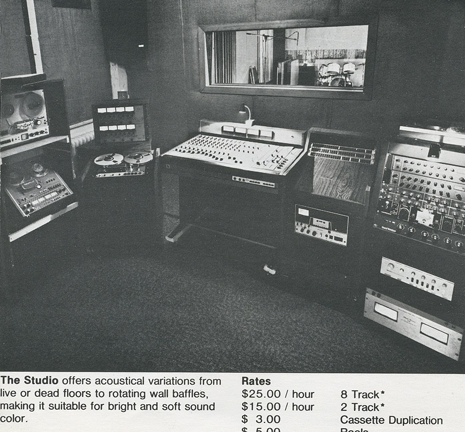
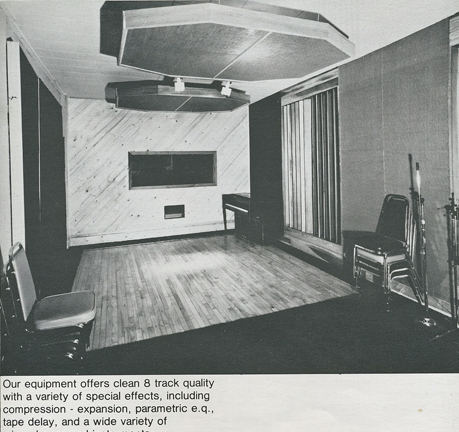
Engineer Dave Howe had this to add to The Studio story:
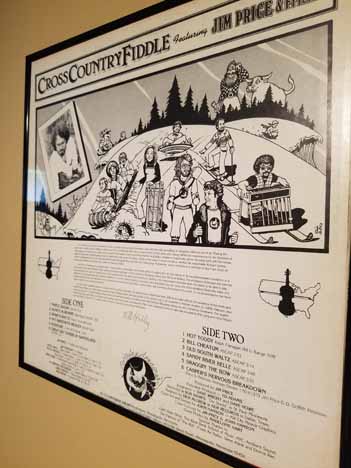
Photo courtesy Dave Howe
Thanks for this great information, Dave!
SWEDIEN STUDIOS – Please see Kay Bank
TONKA RECORDING
Tonka Recording was advertised as a new studio in the June 13, 1968, Minnetonka Sun. It was owned and operated by Robert Walin, and located at No. 1 Easton Ave., Deephaven Park.
Tape recordings and records for groups and individuals
Recordings in the studio or on location
Specializing in rock and roll groups.
Featuring multi-track recordings
$20 per hour plus materials.
TRACKS ON 5th
Engineers / Producers / Owners: Michael McKern and Chris Hinding
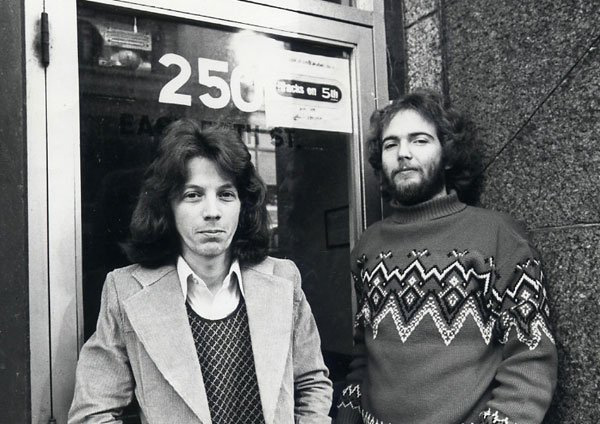
Photo courtesy Michael McKern
Tracks On 5th was in operation from 1975 to 1983.
The studio was located at 250 East 5th Street in St. Paul’s Lowertown area. Long before Lowertown was the popular restaurant and bar area, it was a quiet area of empty warehouses, artists’ lofts and a rundown park area. Tracks on 5th was located on the corner of 5th and Wacouta Street, the site of was Milton’s Clothing Store, down the hall in Suite 105.
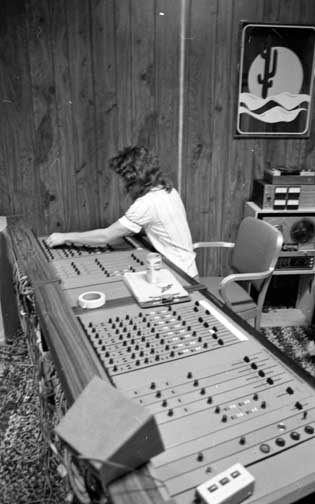
1977 Photo courtesy Michael McKern
Clients were diverse: from hard rock bands like Berlin and Teazer, to acoustic artists like Peter Lang, Rio Nido, and the University of Minnesota Orchestra.
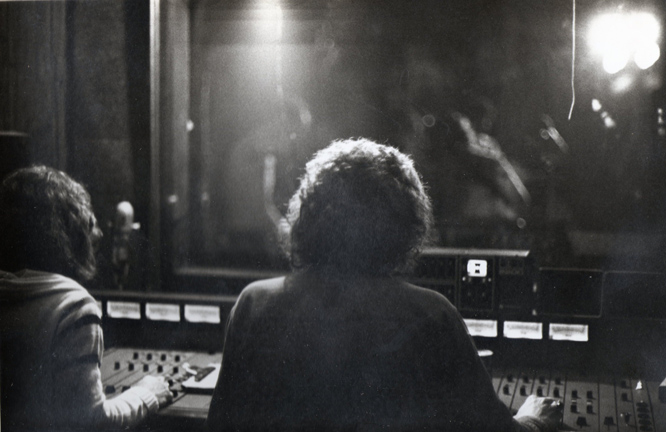
Photo courtesy Michael McKern
The late ’70s and early ’80s ushered in the Punk / New Wave scene, and Tracks on 5th recorded some of the best.
On April 9, 1979, Tracks on 5th won the top three Connie Hechter Awards for:
- Best EP -“Flamingo”
- Best LP – Rio Nido, “I Like To Riff”
- Best 45 – “Slack,” by NNB
Tracks also hosted National acts like the Amazing Rhythm Aces, Bonnie Raitt, and the MCA Records release party for Tom Petty’s “ Damn The Torpedoes.”
Michael McKern is currently working as McKern Audio in Tampa, Florida.
Chris Hinding is currently the owner and head engineer at Jangletown in St. Paul, Minnesota.
UNIVERSAL AUDIO – Please see Kay Bank
SOURCES:
Arne Fogel
City Pages article by Tom Herbers dated June 8, 2005
